Imagine transforming your backyard into a sanctuary where nature and design blend seamlessly. Whether you’re embarking on your first outdoor project or have years of experience under your tool belt, using natural materials in your outdoor structures can elevate your space’s aesthetic and environmental harmony. This guide will illuminate the path toward integrating wood, stone, and other earth-friendly components, making your outdoor haven both stunning and sustainable.
In the following sections, you’ll discover practical tips and creative ideas for selecting the best materials that resonate with your style and climate. From the rich textures of reclaimed wood to the timeless elegance of natural stone, this guide offers insights to inspire your next project and ensure it stands the test of time. Dive in and let nature shape your outdoor living experience.
Identify Suitable Natural Materials
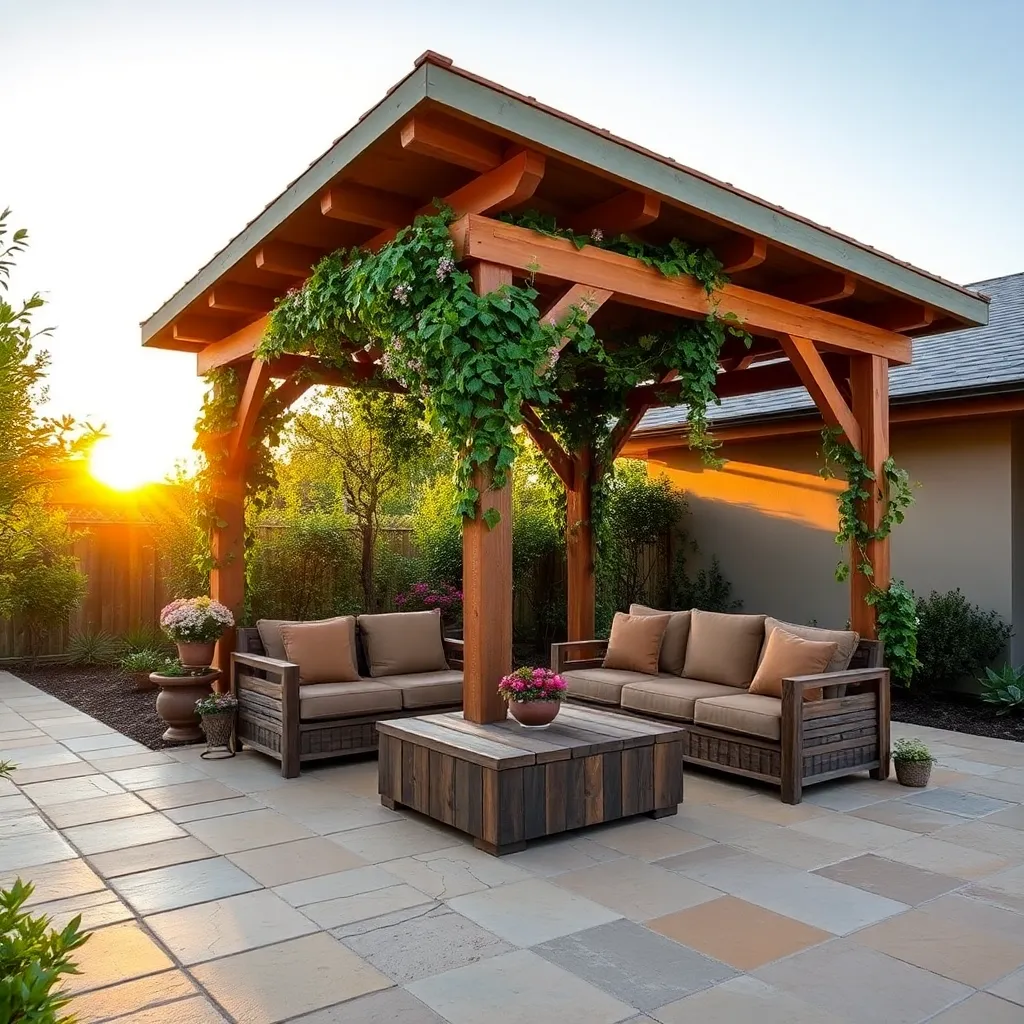
When selecting natural materials for your outdoor shelter, consider options that are both durable and aesthetically pleasing. Wood is a popular choice, with cedar and redwood offering excellent resistance to rot and insects, making them ideal for frameworks or support beams. For a more rustic look, consider using bamboo, which is both strong and flexible, though it requires treatment to withstand the elements. Stone can be an excellent choice for foundations or flooring, providing a sturdy and timeless base.
Incorporate natural materials by using locally sourced options to enhance sustainability and blend seamlessly with your surroundings. For roofing, consider materials like thatch or living roofs that not only provide shelter but also integrate with the environment. Advanced builders might explore using cob or earthbags for walls, which require more expertise but offer excellent thermal mass and insulation. Ensure your design accounts for local weather conditions, using thicker materials in colder climates or considering shade and ventilation in hotter ones.
Design Structure with Eco-Friendly Plans
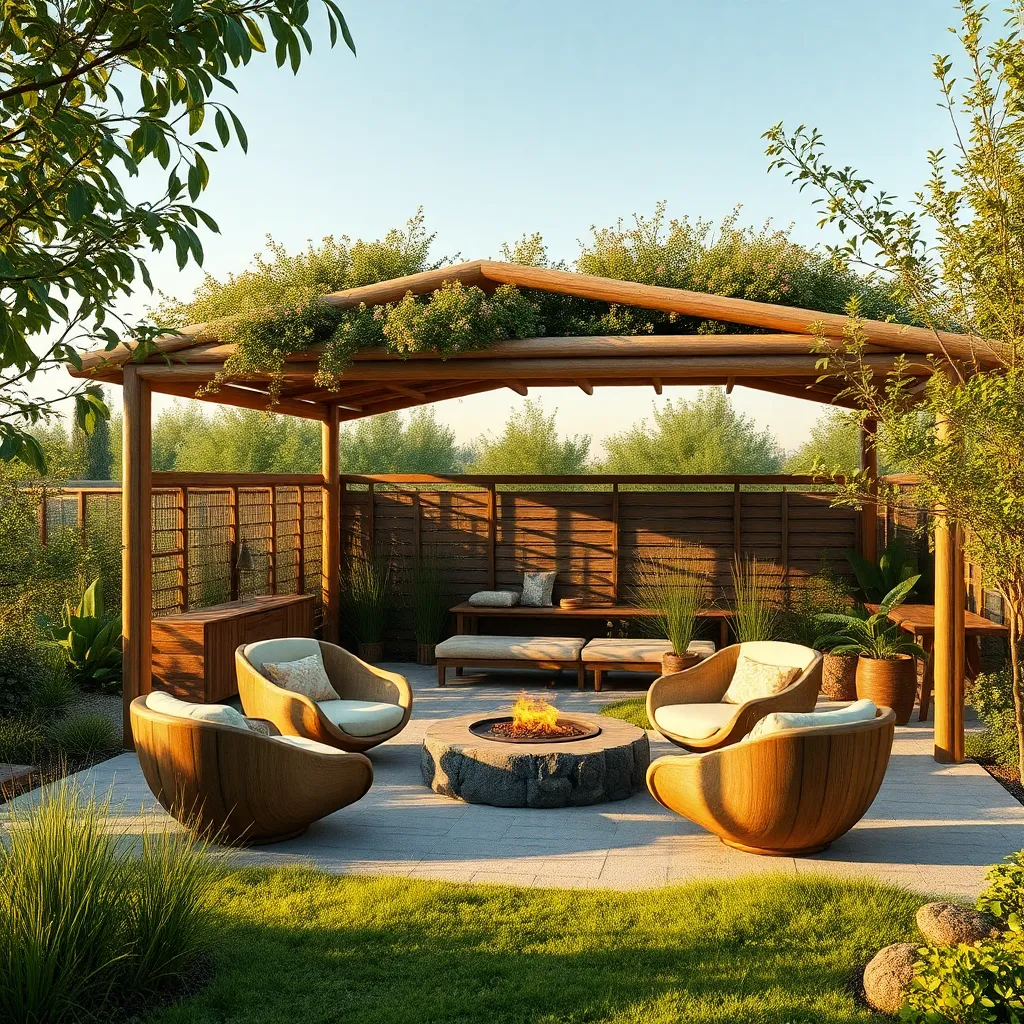
When designing an outdoor shelter with eco-friendly plans, start by selecting sustainable materials like bamboo, reclaimed wood, or recycled metal. These materials not only reduce environmental impact but also add a natural aesthetic to your space. To ensure durability, consider using weather-resistant finishes that are eco-friendly, such as natural oils or water-based sealants. Beginners can start with simple structures like pergolas or gazebos using prefabricated kits, while experienced builders might explore more customized designs.
Incorporate design elements that maximize natural light and ventilation, such as open beams or strategically placed windows. This approach reduces the need for artificial lighting and promotes air circulation, making your shelter more comfortable and sustainable. For added functionality, include rainwater harvesting systems by integrating a slight roof slope that directs water into a collection barrel. Remember to plan for foundation stability—a basic gravel bed can suffice for simple structures, while more complex designs might require concrete footings for extra support.
Gather and Prepare Materials
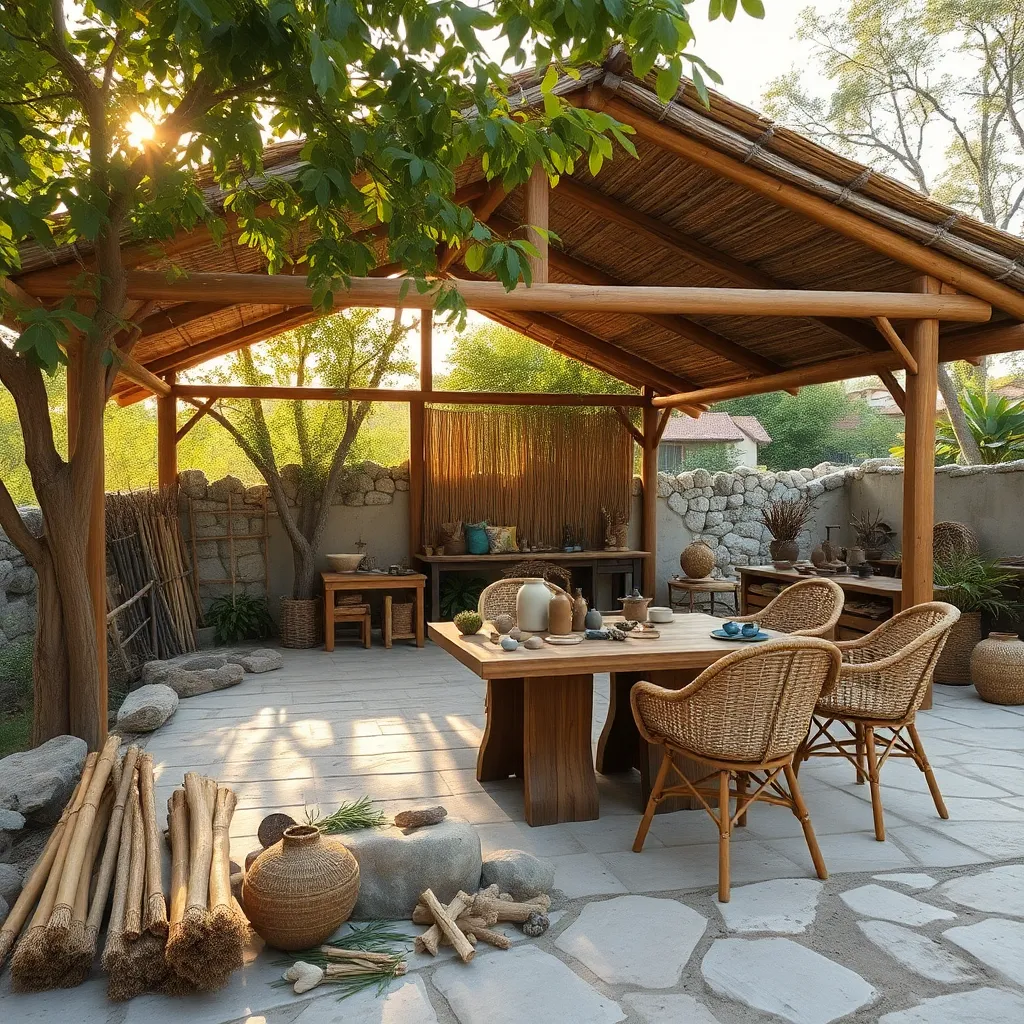
To begin building your outdoor shelter with natural materials, start by identifying and gathering resources from your local environment. Sustainably sourced wood, such as bamboo or cedar, is ideal for structural elements due to its strength and resistance to weather conditions. If you’re near a beach or river, consider using driftwood or large stones for added stability and aesthetic appeal. When selecting materials, ensure they are free from decay or pests to prolong the life of your shelter.
Once you have gathered your materials, it’s time to prepare them for construction. Trim branches and logs to uniform lengths, typically 8 to 10 feet, to ensure structural integrity and ease of assembly. For a more advanced touch, consider sanding and treating wood with natural oils to enhance durability and weather resistance. Beginners might opt for simple lashings with natural fibers like jute or sisal to bind elements, while more experienced builders may experiment with traditional joinery techniques for a seamless finish. Embrace creativity in your design, but always prioritize safety and stability.
Construct Framework Using Wood
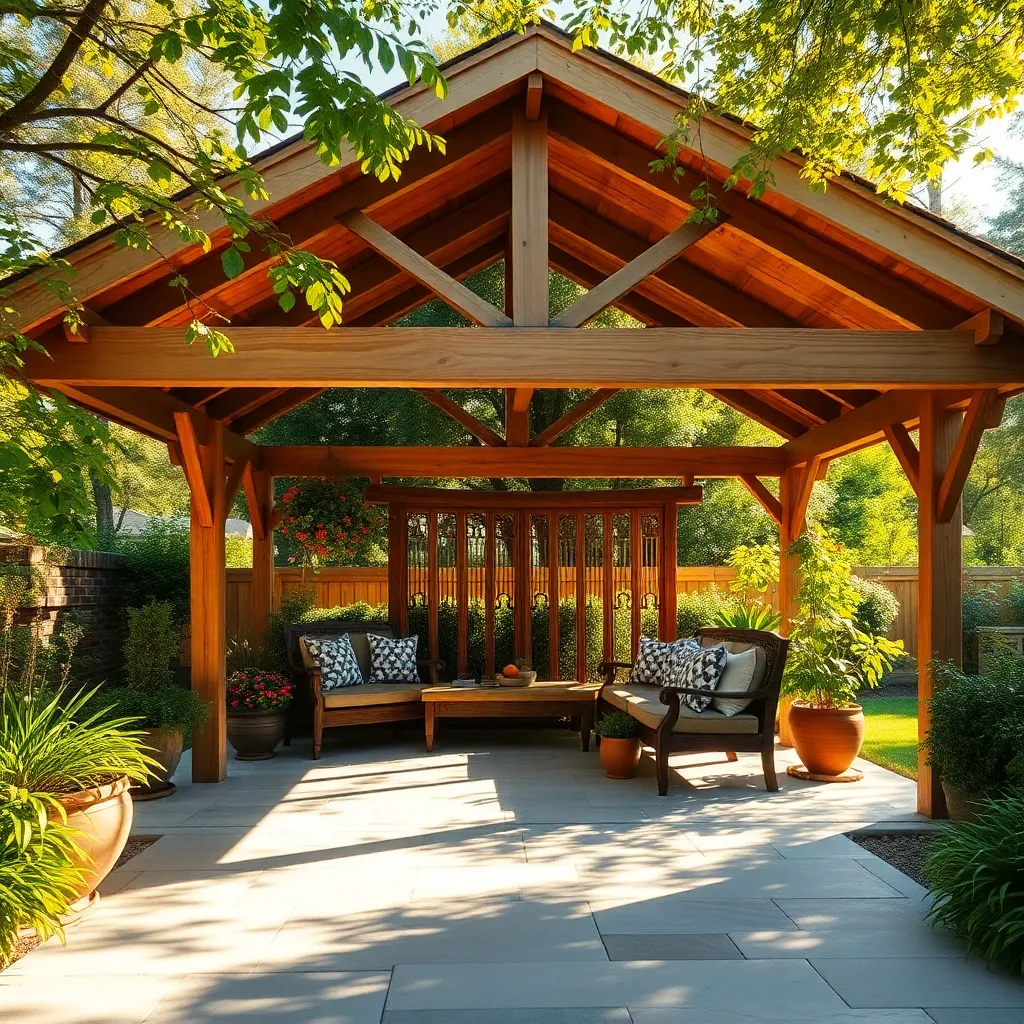
When constructing a framework using wood, it’s crucial to select the right type of timber, as this can greatly affect the durability of your outdoor shelter. Opt for weather-resistant woods such as cedar, redwood, or pressure-treated pine, which can withstand outdoor elements. Begin by measuring and cutting the wood according to your design plan, ensuring precision with a miter saw for clean, accurate cuts. Secure the structure with galvanized screws or bolts to prevent rust, and consider adding cross-bracing for additional stability.
For beginners, a simple design such as a lean-to or A-frame can be an excellent starting point, offering both ease of construction and functionality. Use a spirit level to ensure your framework is perfectly aligned, which is crucial for stability. For more advanced builders, incorporating decorative elements like lattice panels or a pergola roof can enhance the aesthetic appeal. Always pre-drill holes to avoid splitting the wood, and apply a sealant or wood stain to protect against moisture and UV rays, extending the life of your structure.
Incorporate Natural Finishing Touches
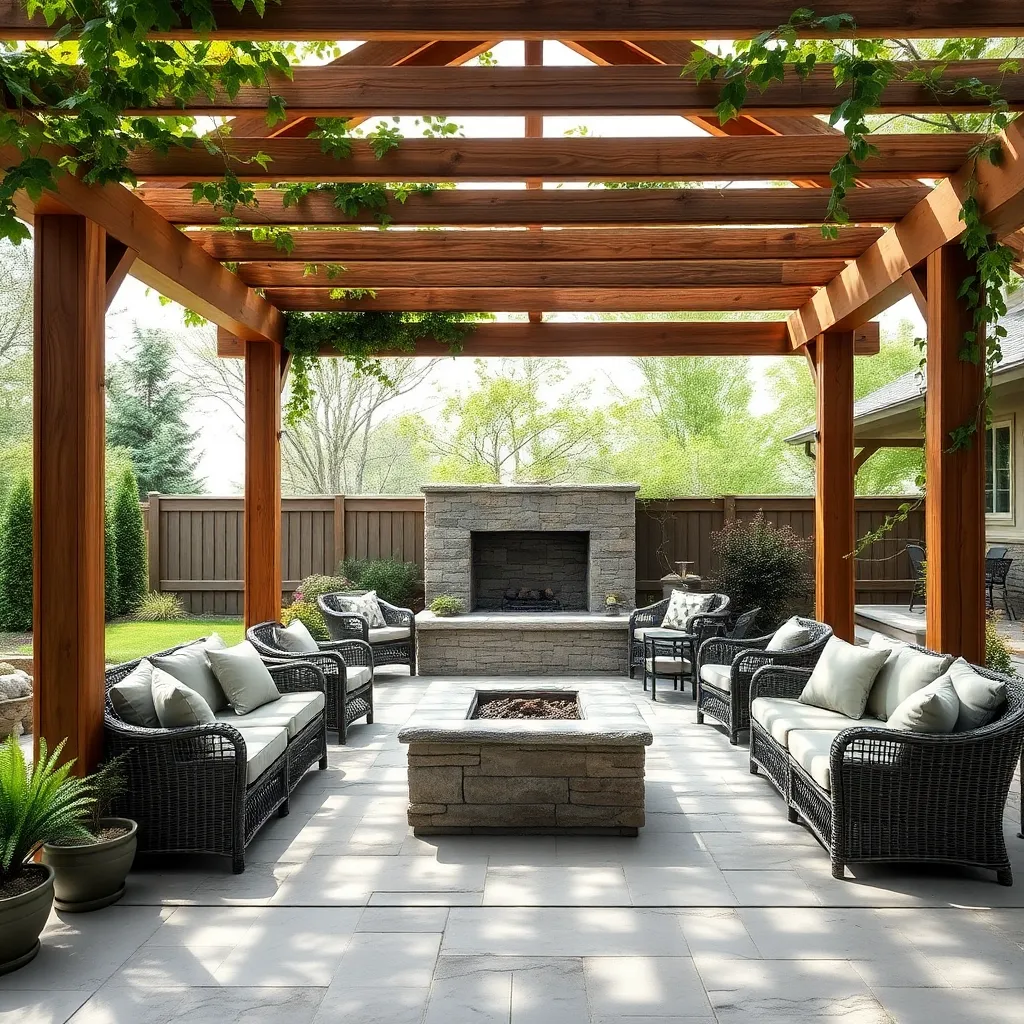
Enhancing your outdoor shelter with natural finishing touches can create a cohesive and inviting space. Consider using stone or gravel pathways leading to the shelter to blend seamlessly into your garden. These elements not only add visual interest but also provide functional benefits like improved drainage and reduced soil erosion. For those looking to add a touch of greenery, integrate climbing plants such as clematis or honeysuckle along the structure’s edges to soften the lines and add a natural canopy, providing shade and privacy.
For a more advanced touch, consider incorporating live-edge wood slabs for benches or tabletops, which highlight the natural beauty of the wood grain and create a rustic charm. If you’re comfortable with DIY projects, adding a green roof is an excellent way to improve insulation and promote biodiversity. Use hardy, drought-resistant plants such as sedum that can thrive with minimal maintenance. These elements not only enhance the aesthetic appeal of your shelter but also contribute to an environmentally friendly and sustainable outdoor space.
Conclusion: Creating Beautiful Outdoor Spaces
In exploring the intersection between natural materials and outdoor structures, we’ve uncovered five key relationship concepts: the importance of authenticity, the strength found in flexibility, the balance of harmony with nature, the beauty of simplicity, and the enhancement of connection through shared experiences. Each of these principles not only applies to constructing physical spaces but also to building resilient and meaningful relationships.
As an immediate step, consider integrating one of these concepts into your next outdoor project or relationship endeavor. Perhaps you can start by planning a simple, nature-inspired get-together with a loved one, fostering authenticity and connection.
To continue nurturing your relationships with the wisdom gleaned from these concepts, save or bookmark this guide. This way, you can revisit the insights when planning future projects or seeking inspiration in your personal connections.
Looking ahead, embracing these natural principles can lead to more fulfilling and robust relationships, echoing the strength and beauty found in nature itself. Empower yourself to craft not just spaces but also connections that stand the test of time, and let this guide be your companion on that journey.


